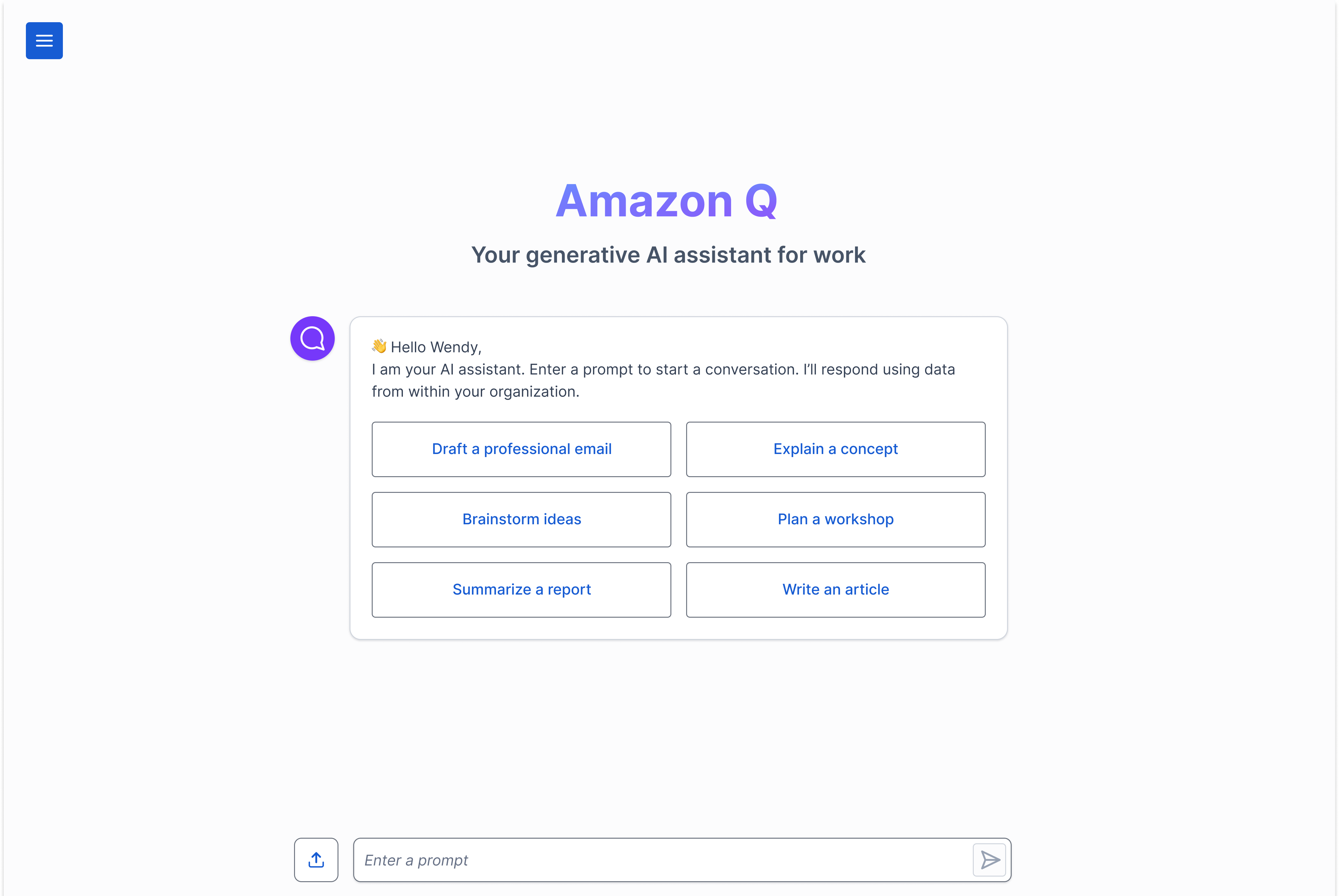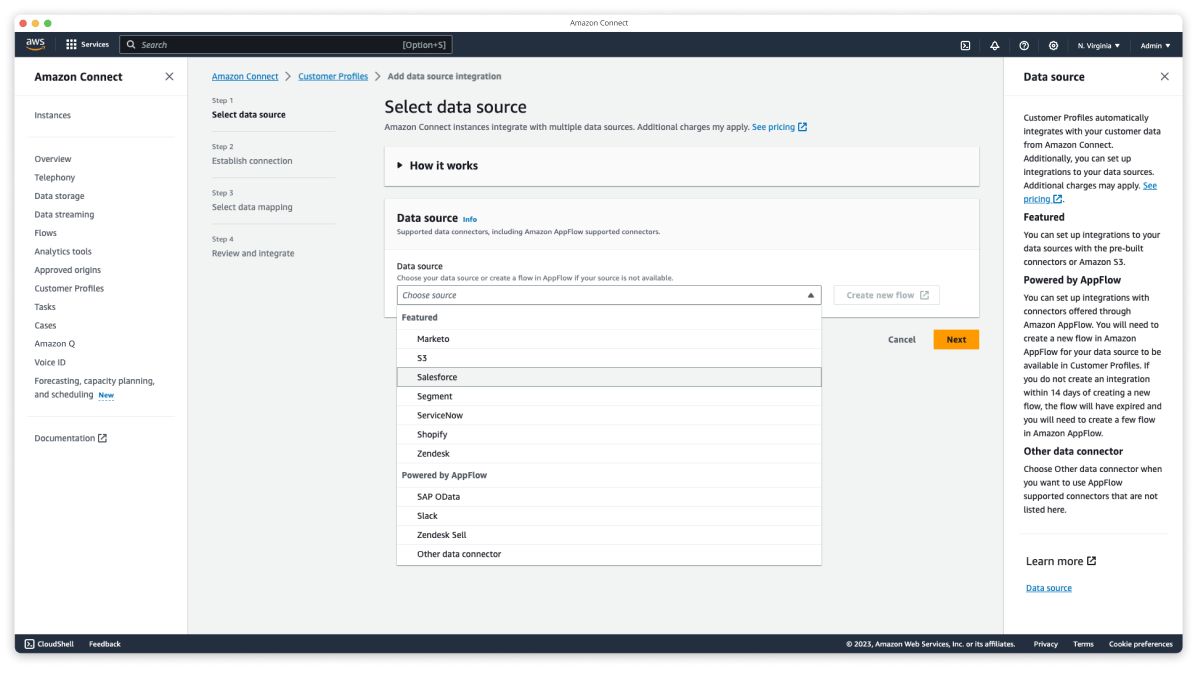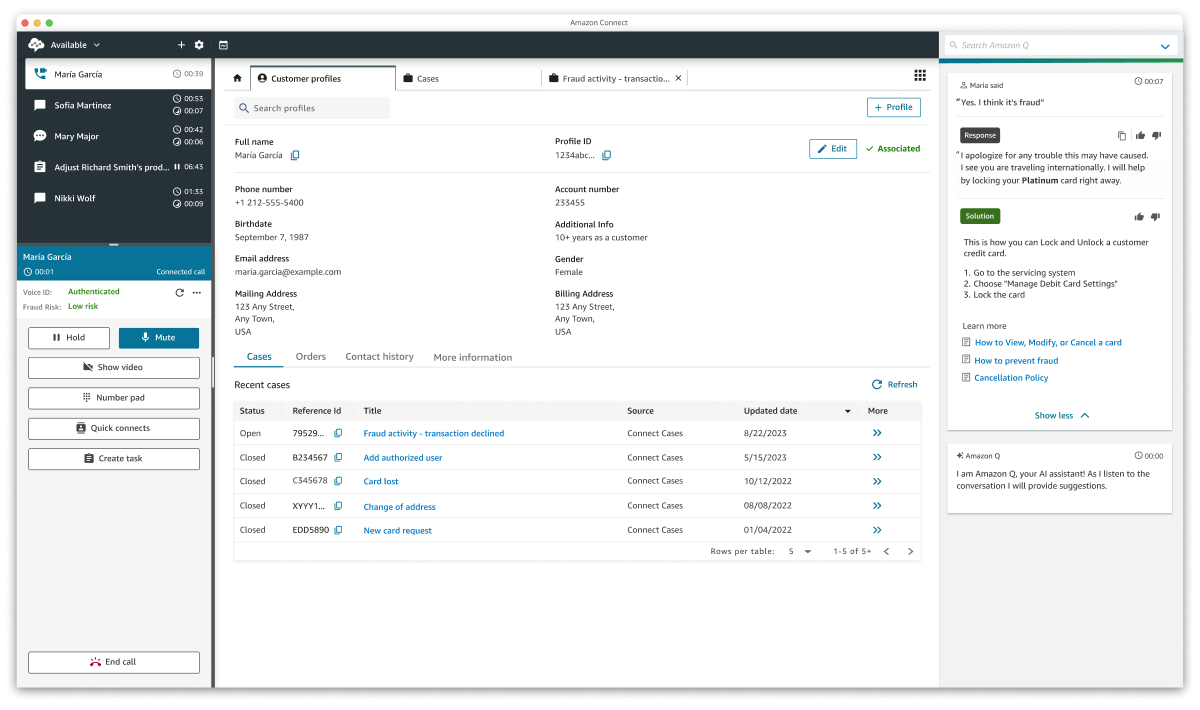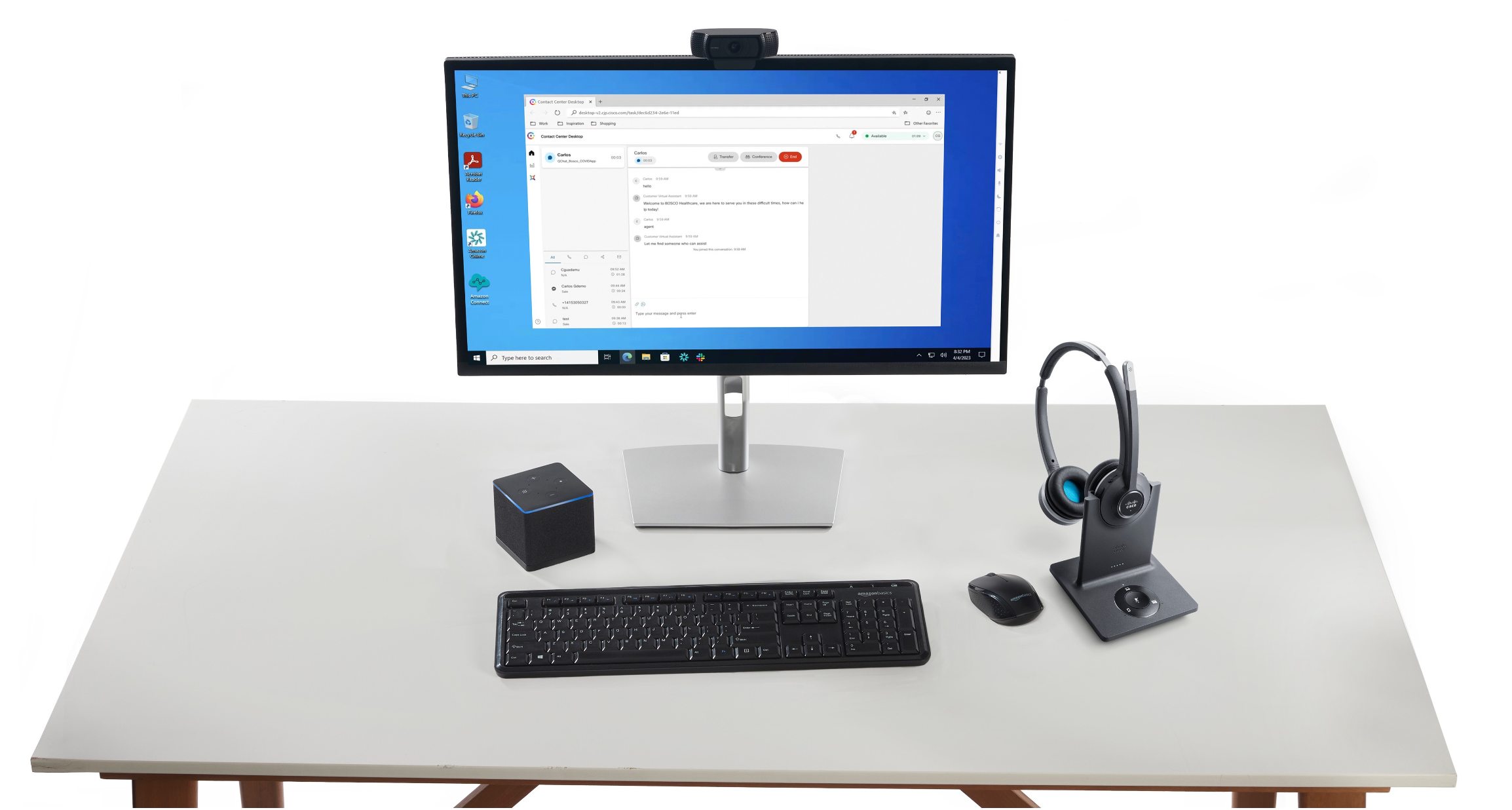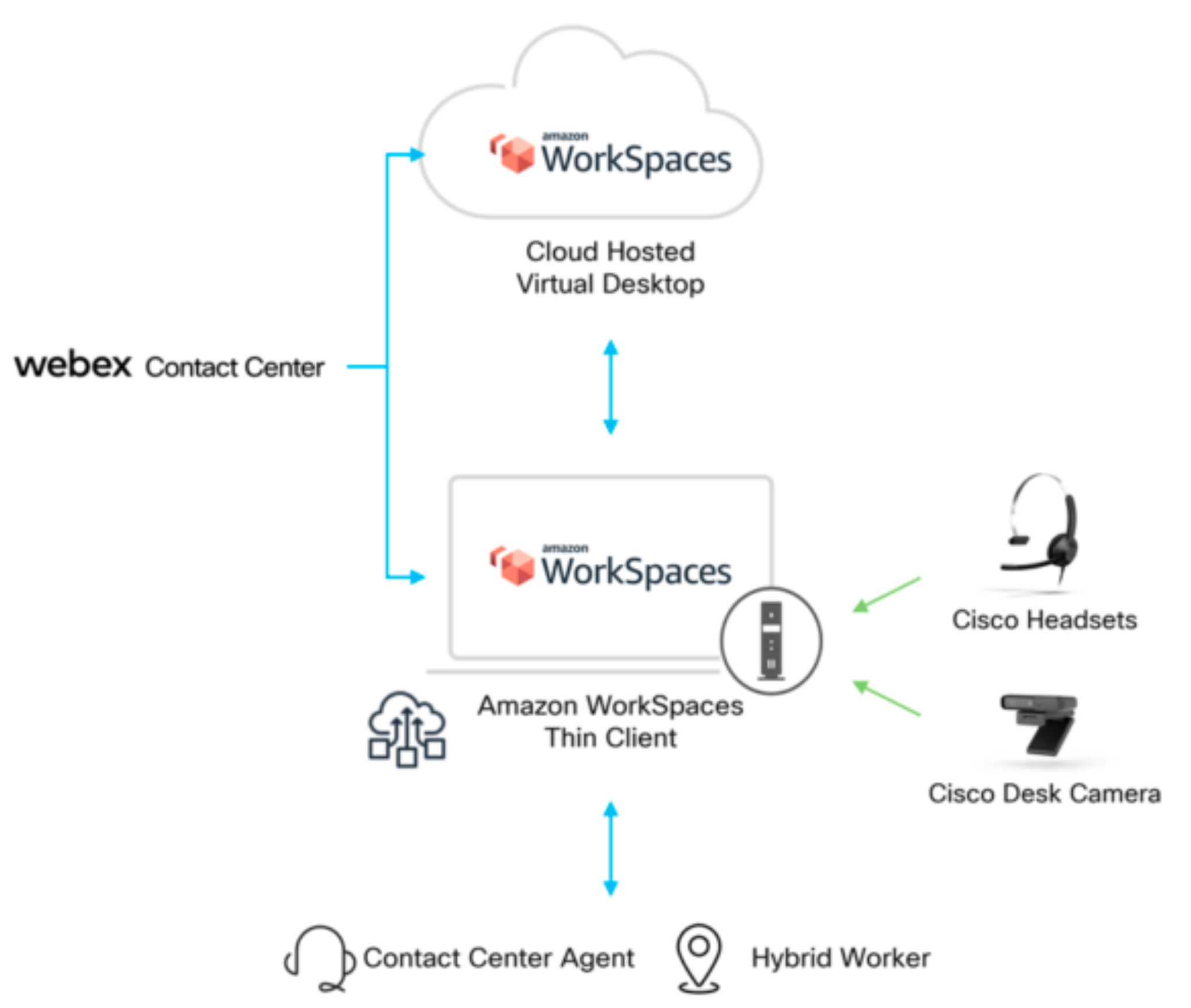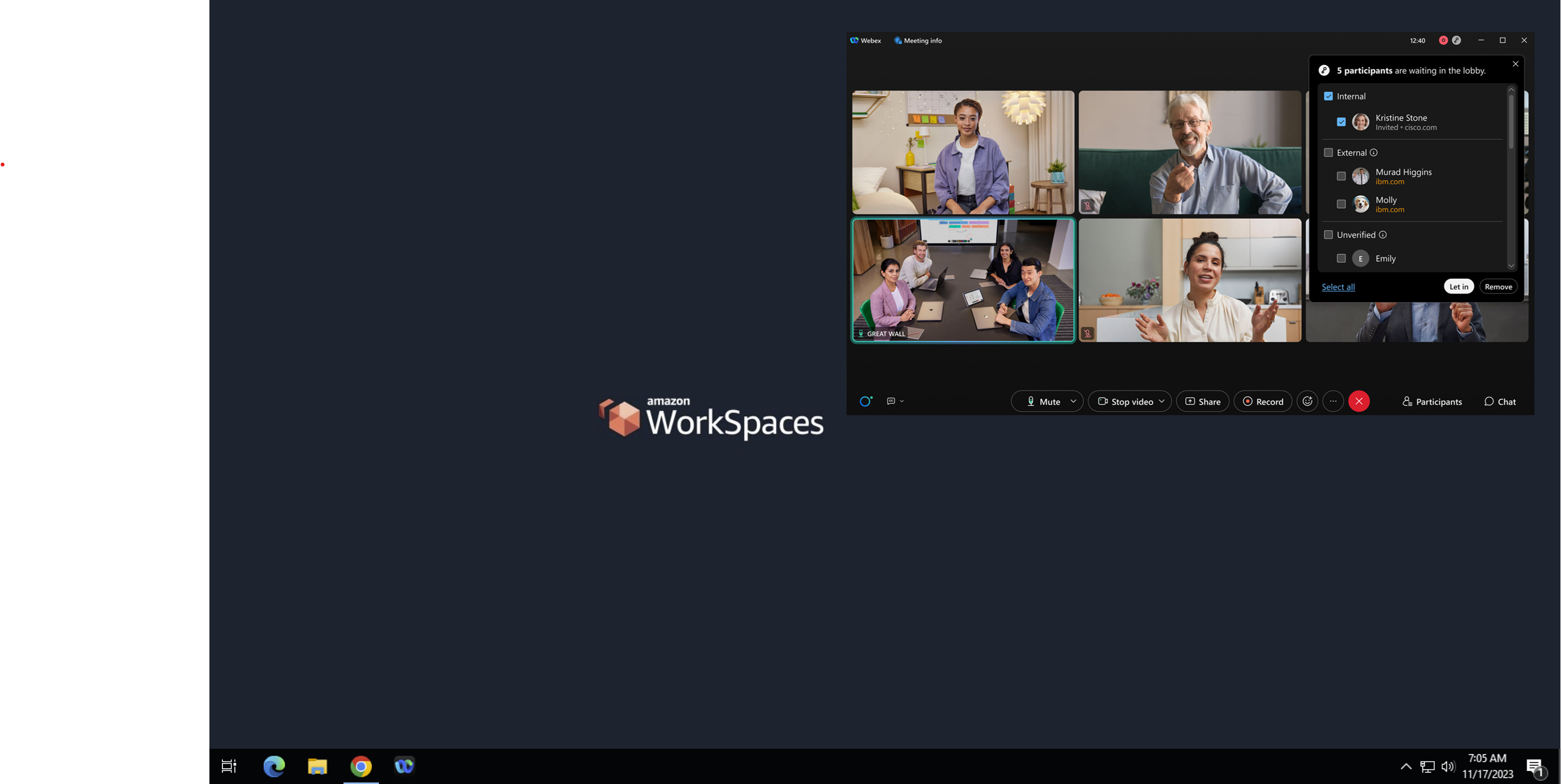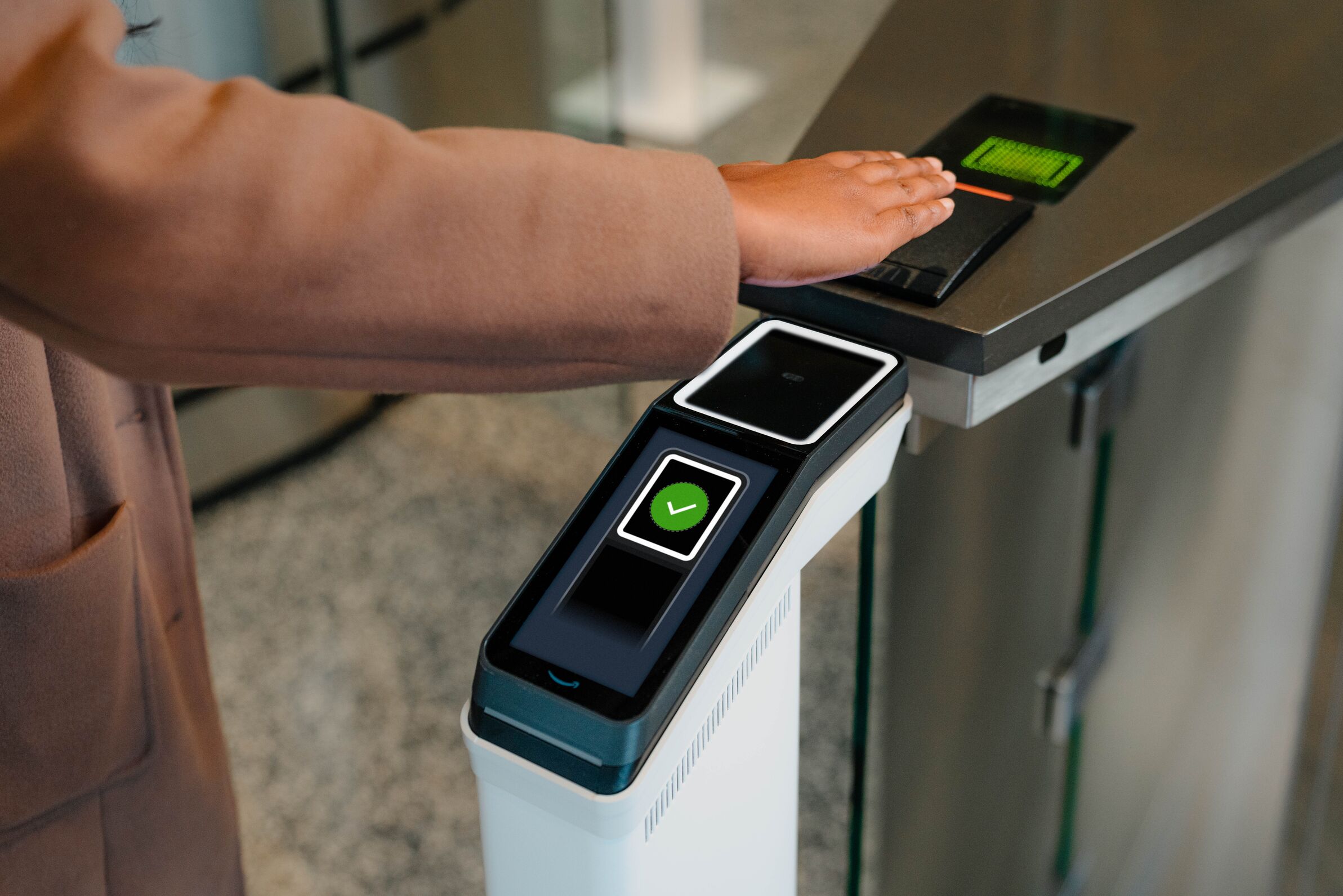Welcome to a special edition of No Jitter Roll which focuses on many of the announcements from the AWS re:Invent 2023 event that was held November 27 through December 1, 2023, in Las Vegas, Nevada. Read on for news about AWS and Cisco, AWS and Salesforce, AWS and ServiceNow, and what AWS will be doing with a generative AI-powered assistant.
AWS Launches Amazon Q, a Generative AI-powered Assistant
Positioned as a tool for “general business use” and, of course, an assistant (like every other gen AI-powered “copilot,” such as Microsoft 365 Copilot, Zoom AI Companion, Webex AI Assistant and the Salesforce Einstein Copilot), Amazon Q allows users to “have conversations, solve problems, generate content, gain insights, and take action by connecting to [a] company’s information repositories, code, data, and enterprise systems.” The name “Q” was chosen to represent the questions customers can ask and get answered. The following image shows the main interface for Amazon Q.
The above linked AWS post provides an example of how Amazon Q can be given access to various data sources – social media, a blog, corporate information, etc. – and then used to generate suggestions for a new piece of content.
Amazon Q provides access controls that will restrict responses to only using data or acting based on the employee’s level of access. Q will also provide citations and references to the original sources for fact-checking and traceability. Companies can choose from 40+ built-in connectors to data sources and enterprise systems, including Amazon S3, Google Drive, Microsoft SharePoint, Salesforce, ServiceNow, and Slack. Through plugins that manage access to enterprise systems (e.g., ServiceNow, Jira, Salesforce, and Zendesk) Amazon Q can perform user-requested tasks, such as creating support tickets or analyzing sales forecasts.
Amazon Q is available now in preview in two AWS Regions: US East (N. Virginia) and US West (Oregon). There are four total US regions: East (Ohio), East (N. Virginia), West (N. California) and West (Oregon). There are many other global regions; AWS Regions are separate geographic areas and are independent of one another to achieve “the greatest possible fault tolerance and stability.” (Note: There are two additional government-only regions in the U.S.)
Amazon Q Business (discussed above) costs $20 per month per user, with a minimum of 10 users (there are no user-based charges during the preview). For developers and IT users, there is also the Amazon Q Builder which costs $25 per month per user.
The Q pricing page also states that the Amazon Q application can be connected to enterprise content and systems, and used to ask questions, generate summaries and content, and perform actions like creating tickets. Doing so involves creating an “Amazon Q Index.” Per the Amazon Q Developer Guide, the index is a corpus of customer documents. Amazon charges customers for creating their Amazon Q Index by “units of 20K documents at a rate of $0.14/hour ($100/month). You can start with 1 unit and add additional storage units as required. Each storage unit includes 100 hours of connector usage per month.”
AWS states further that some Amazon Q features may have additional pricing after the preview.
Amazon Connect Introduces Generative AI Capabilities
AWS’s cloud contact center now features Amazon Q in Connect, which the company describes as a gen AI-enhanced evolution of Amazon Connect Wisdom. It assists agents with real-time responses and recommended actions, suggest customer intent and generate customer contact summaries. Amazon Lex now uses generative AI to assist in the creation of self-service chatbots and IVR systems. If so configured by contact center administrators, these chatbots and IVRs can generate responses for common customer questions by searching through an organization’s existing knowledge base and summarizing the most relevant details.
Amazon Connect Customer Profiles uses generative AI to reduce the time needed to provide personalized customer experiences. As shown in the following graphic, a contact center administrator can add a data source (e.g., Salesforce, ServiceNow, ZenDesk, Amazon S3) with dropdown menus.
Amazon Connect Customer Profiles analyzes that source to understand what the data format and content represent and how the data relates to customers’ profiles. It then organizes and combines data from different sources into complete, accurate profiles. Managers can then review, edit and complete the setup of customer profiles so contact center teams can providing (more) personalized customer service as indicated by the green “associated” text and checkmark in the following graphic.
Finally, Amazon Connect has extended omnichannel capabilities to include out-of-the-box support for two-way SMS messaging and in-app and web voice calling with support for video. These new omnichannel communications — as well as the generative AI enhancements to Amazon Lex, Amazon Q in Connect, and Amazon Connect Customer profiles — are generally available. New generative AI capabilities in Amazon Connect Contact Lens are available in preview.
AWS Announces More Model Choice and New Capabilities in Amazon Bedrock
Amazon Bedrock is a fully managed service that offers access to a choice of generative AI models for tasks like text generation, image generation, and building conversational agents.
The LLMs now available via an API through Amazon Bedrock include Anthropic Claude 2.1 and Meta Llama 2 70B, Cohere Command Light, Cohere Embed English, Cohere Embed Multilingual, Meta Llama 2 13B, and Stability AI Stable Diffusion XL 1.0. Amazon-developed LLMs are also available: Titan Text Embeddings, Amazon Titan Text Titan Image Generator and Titan Multimodal Embeddings.
The Amazon Titan models, which include an image generator and text generators, are created and pre-trained by AWS on large and diverse datasets for a variety of use cases, with built-in support for the responsible use of AI. And Amazon indemnifies customers against "claims that generally available Amazon Titan models or their outputs infringe on third-party copyrights." (In September 2023, Microsoft announced its “Copilot Copyright Commitment.”)
Given the proliferation of LLMs, it is difficult for enterprises to determine which model best fits their specific use case(s). Amazon has announced Model Evaluation on Amazon Bedrock, currently in preview, that will help customers evaluate, compare, and select the best models for their specific use case(s) via automatic or human evaluations.
In the Amazon Bedrock console, customers choose the models they want to compare for a given task, such as question-answering or content summarization. For automatic evaluations, customers select predefined evaluation criteria (e.g., accuracy, robustness, toxicity) and upload their own testing dataset or select from built-in, publicly available datasets. For subjective criteria or nuanced content requiring sophisticated judgment, customers can set up human-based evaluation workflows.
Once customers finish the setup process, Amazon Bedrock runs evaluations and generates a report, so customers can understand how the model performed across key criteria and can select the best models for their use cases.
Many organizations want to supplement existing LLMs with their proprietary data to create more relevant and accurate responses (which includes minimizing hallucinations). The new Knowledge Bases for Amazon Bedrock enables companies to do this by implementing retrieval augmented generation (RAG), a technique that allows customers to customize a model’s responses by augmenting prompts with data from multiple sources, including document repositories, databases, and APIs.
AWS re:Invents Client-Server Enterprise Hardware
The new Amazon WorkSpaces Thin Client (pictured) repurposed its Fire TV Cube into an enterprise-focused hardware product for AWS customers. There are no visible differences from the Fire TV cube, but the USB and HDMI ports connect peripherals needed for productivity. However, the cube sports purpose-built firmware and software for end users and software that allows it to be remotely managed by IT.
Amazon’s Thin Client devices do not store data locally, only in the AWS cloud, and a device only runs approved software centrally deployed by an IT administrator. The Thin Client device also includes security at the hardware level through on-device hardware authentication and integration with persistent desktops (WorkSpaces), nonpersistent applications (Amazon AppStream), and secure browser-only access (WorkSpaces Web).
The AWS Management Console provides real-time visibility into whether the device is active and running the latest software, as well as enabling remote resets of the device or reassociating it with different profiles. Administrators can configure policies, permissions, and access controls for different groups across the organization, as well as control what apps are used on the devices.
Amazon WorkSpaces Thin Clients start at $195 per device and are sold through Amazon Business. Companies can order pre-configured hardware and have them shipped to employees’ homes or offices.
Cisco Webex Contact Center Runs on the New Amazon WorkSpaces Thin Client
Webex Contact Center is a cloud-based contact center platform and is now supported on Amazon WorkSpaces Thin Client devices (illustrated below). In addition, Cisco peripherals, including headsets and desk cameras, are also validated to work with Amazon WorkSpaces Thin Client.
Cisco Webex Supports Virtual Desktops in Amazon Workspaces
Webex now offers extended support for virtual desktops through a dedicated Webex plugin for Amazon WorkSpaces. The Webex plugin establishes a secure connection via a virtual channel within an Amazon WorkSpaces cloud-based desktop computing session.
When participating in a Webex Meeting or making a call within an Amazon WorkSpaces session, users can configure audio and video devices through Webex’s native preferences. The plugin encodes and sends video and audio to the Webex Meeting or Calling service. It also takes video and audio from the Webex service and overlays it on the Webex client that is running in the Amazon WorkSpaces session.
The plugin tracks the position of the Webex App window and synchronizes audio and video actions to ensure seamless alignment of media. That is, if the microphone is muted or camera turned on off, those changes happen on both the computer and the virtual desktop.
Salesforce and AWS Expand and Deepen Partnership
The CRM provider is expanding its use of AWS, including making many of Salesforce’s solutions available on the AWS Marketplace.
Service Cloud Voice and Amazon Connect are already integrated, but early 2024 will see the availability of a deeper integration that will include Amazon Connect Chat to Service Cloud Digital Engagement and Amazon Connect forecasting, plus capacity planning and agent scheduling to enhance the Salesforce Service Cloud Omnichannel supervisor experience.
Amazon Bedrock, AWS’s managed service for foundation models (FMs), is now available through the Einstein Trust Layer. This allows customers to create custom prompt templates grounded in their data to be sent to their preferred FMs, including those hosted on Bedrock.
The Salesforce Data Cloud will support data sharing across additional AWS technologies. All these integrations will be governed by new centralized access controls which will give customers the ability to manage secure user access at the folder, object, and file level for Data Cloud content stored in Amazon Simple Storage Service (Amazon S3).
Finally, Salesforce is expanding its use of AWS, including compute, storage, data, and AI technologies through Hyperforce (Salesforce’s architecture that allows their platform to be deployed on public cloud infrastructure, including AWS, Google Cloud Platform and Microsoft Azure).
ServiceNow Collaborates with AWS
The digital workflow company announced a five-year strategic collaboration agreement with AWS. Beginning in early 2024, the ServiceNow Platform and its full suite of solutions will be available as a software-as-a-service (SaaS) offering in the AWS Marketplace. The companies will also co-develop and launch industry-specific, AI-powered business applications to host on AWS and list in AWS Marketplace.
One example of this collaboration includes the AI Call center solution, which allows a company to stand-up a contact center powered by AWS AI technology and Amazon Connect and ServiceNow workflows via ServiceNow Customer Service Management (CSM).
AWS Introduces Amazon One Enterprise
A palm-based identity service, Amazon One Enterprise enables organizations to provide a contactless experience for employees and other authorized users to gain access to physical and digital assets such as restricted software. IT and security administrators can install the Amazon One devices and manage users, devices, and software updates in the AWS Management Console.
Amazon One Enterprise combines palm and vein imagery for biometric matching and, according to Amazon, delivers an accuracy rate of 99.9999%. The palm signature is a unique numerical vector created from the user’s palm image. The solution supports industry standard access-control protocols such as Open Supervised Device Protocol (OSDP) and Wiegand.
The new service is designed to ensure palm images, user credentials, and other metadata are immediately encrypted and sent to a dedicated Amazon One Enterprise service account in the AWS Cloud. To further enhance privacy, each user’s palm data is encrypted using a unique key. When employees leave the organization or decide to unenroll, they can delete their palm data by choosing the Unenroll option on the Amazon One device, or an IT administrator can unenroll them through the AWS Management Console.
AWS Elsewhere on No Jitter
In case you missed them, here are some of our top stories:
- Amazon Connect’s Pasquale DeMaio Talks Agent Experience and AI: Amazon Connect’s VP of Customer Experience talks about Connect’s current AI implementations, provides a glimpse of potential generative AI value-adds and then focuses on how AI can impact the agent’s experience.
- AWS Flexes Its Generative AI Muscles: AWS launched several new products designed to make generative AI more accessible and affordable.
- Customer Contact Week with AWS: Customer Contact Week brought together thousands of CX leaders come from across the world to hear about the latest contact center stories and innovations.
- Reinventing Customer Experiences: Using Generative AI and Amazon Connect
- Amazon Chime SDK: Simplifies ML with call analytics feature.






